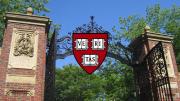The College has admitted 1,954 of 61,220 applicants to the class of 2026 (740 of whom were admitted through early action in December): an increase of 6.6 percent in the number of hopefuls from 57,435 last year, continuing the pandemic-era, standardized-test-optional surge in applications. The 3.2 percent admit rate is the lowest in College history, down from the 3.4 percent rate last year—the arithmetical result of the continuing rise in the applicant pool.
Looking ahead, Harvard has already announced that the SAT and ACT will remain optional for future applicants through those seeking admission to the class of 2030. The move to optional testing, instituted during the pandemic (when in-person testing was challenging), may be on the verge of becoming permanent: the California public universities have already done away with the traditional standardized tests, and many other institutions appear on the verge of doing so. On the other hand, schools including Georgetown and MIT have reinstated the requirement that applicants submit standardized tests—and the latter made an especially vigorous case for doing so on grounds of equity for students who come from under-resourced high schools and educational systems.
Financial Aid Augmented as Term Bills Increase
With today’s announcement, the College also increased financial aid, eliminating all tuition, room, board, and fee costs for students from families with annual incomes below $75,000—an increase from the previous threshold of $65,000. The higher threshold applies to the class of 2026, notified of acceptances today. Nearly one-quarter of Harvard College students come from families who will qualify for a no-cost undergraduate education under the new standard. (Median household income in the United States is about $70,000 to $75,000.)
The sticker price for the 2022-2023 year at the College (before any aid awards) will increase by 3 percent to $76,763, up $2,235 from $74,528 this year. On this trajectory, the College’s posted term bill (tuition, room, board, and fees) will cross $80,000—a threshold other institutions have already breached—by the 2024-2025 academic year.
Beginning in the 2022-2023 academic year, all first-year students from families with incomes below the new threshold and typical assets will also receive a $2,000 start-up grant to help with move-in and other beginning-College expenses, a program that was piloted beginning in 2016.
Today’s aid announcements are consistent with actions throughout higher education. Yale boosted its aid package for 2022-2023 last fall (and was already at the $75,000 zero-cost threshold for families with typical assets). Emory recently eliminated loans from its aid package—as did Rice, which also raised its zero-cost family income threshold to $75,000. At a time of widespread need and historic endowment investment returns, this round of financial-aid enhancements at private institutions looks likely to expand still further.
Harvard projects that 55 percent of students will receive need-based grant aid, reducing the family cost of attending to $12,700.
The Class in Brief
First-generation college students represent 20.3 percent of the admitted class, down slightly from 20.7 percent last year, and an estimated 20.5 percent of the class qualified for federal Pell grants (generally awarded to those from lower-income backgrounds)—up fractionally from 20.4 percent last year.
According to the College announcement, those admitted to the class of 2026 reflect the increasing diversity of applicants, with 15.5 percent identifying as African American/black (versus 18 percent last year), 27.8 percent as Asian American (27.2 percent), 12.6 percent as Latinx (13.3 percent), 2.9 percent as Native American (1.2 percent), and 0.8 percent as Native Hawaiian (0.6 percent). Women account for more than half, 54.2 percent, of all those accepted—a further increase from 52.9 percent in the class of 2025. International students make up 13.9 percent of the class, rising from 12.2 percent.
As in years past, the announcement highlighted recruiting of military veterans: 18 were admitted to the class of 2026 (versus 19 last year), and 40 admitted applicants expressed interest in Reserve Officers’ Training Corps (ROTC),the same number as last year.
Those admitted are invited to campus for an in-person Visitas weekend April 24-25, but the Crimson Connect virtual program and events will also be offered online. Students must notify the College whether they accept the offer of admission by May 2.









